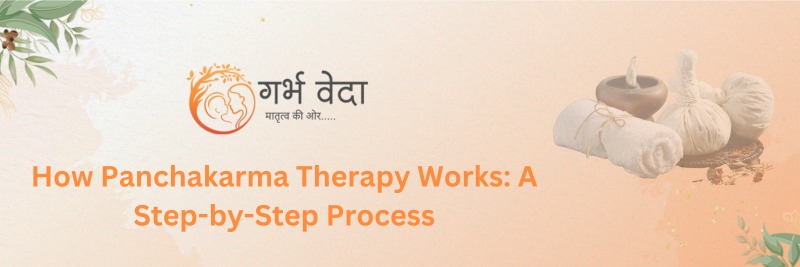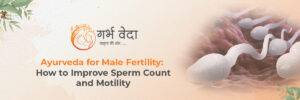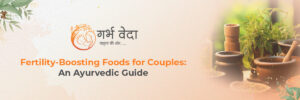Panchakarma is a fundamental therapeutic practice in Ayurveda, comprising five main procedures aimed at detoxifying the body. The term “Pancha” translates to five, while “karma” signifies actions or therapies. This practice is employed to remove waste and toxins from the body, helping to restore balance among the Doshas (Vata, Pitta, and Kapha). It is regarded as one of the most effective approaches for promoting health and preventing disease.
Importance of Detoxification and Rejuvenation for Health
The process of detoxification, as prescribed by Ayurveda, is crucial to ridding the body of accumulated toxins (ama), which are often the root cause of various diseases. Panchakarma not only cleanses the body but also rejuvenates the mind and spirit, promoting overall vitality. Regular detoxification through Panchakarma is believed to strengthen the immune system, increase mental clarity, and prevent chronic ailments.
1. Pre-Panchakarma Preparations (Purvakarma)
- Vamana (Therapeutic Emesis): This involves inducing vomiting to remove toxins and excess Kapha from the body.
- Virechana (Purgation Therapy): This procedure uses herbal laxatives to eliminate excess Pitta and toxins through the bowels.
- Basti (Medicated Enema): This method involves administering medicated oils or herbal decoctions to cleanse Vata-related toxins from the colon.
- Nasya (Nasal Administration): This technique uses medicated oils or powders to clear the nasal passages and remove toxins from the head and neck area.
- Raktamokshana (Bloodletting): This is the therapeutic removal of impure blood to address blood-related disorders.
Importance of Preparing the Body for Detoxification
Panchakarma is a fundamental therapeutic practice in Ayurveda, comprising five main procedures aimed at detoxifying the body. The term “Pancha” translates to five, while “karma” signifies actions or therapies. This practice is employed to remove waste and toxins from the body, helping to restore balance among the Doshas (Vata, Pitta, and Kapha). It is regarded as one of the most effective approaches for promoting health and preventing disease.
2. Step-by-Step Panchakarma Procedures
- Vamana (Therapeutic Emesis)
Vamana is a method that induces controlled vomiting to eliminate excess Kapha and toxins related to mucus from the body. This treatment is especially helpful for disorders linked to Kapha, such as asthma, bronchitis, and sinus congestion. The process involves taking herbal preparations that trigger vomiting, followed by specific aftercare to help restore balance.
- Virechana (Purgation Therapy)
Virechana employs herbal laxatives to cleanse excess Pitta and toxins from the digestive system. It is particularly effective for conditions associated with Pitta imbalances, including skin disorders, digestive problems, and liver issues. The purgation process is closely monitored to ensure that toxins are eliminated without causing discomfort.
- Basti (Medicated Enema)
Basti is regarded as the most effective treatment for Vata disorders. This involves administering medicated oils or herbal decoctions through an enema to cleanse the colon and regulate Vata movement in the body. Basti is beneficial for conditions like constipation, arthritis, and nervous system disorders. There are various types of Basti treatments tailored to individual needs, ranging from cleansing (Niruha Basti) to nourishing (Anuvasana Basti).
- Nasya (Nasal Administration)
Nasya consists of administering medicated oils or powders into the nasal passages to cleanse and balance the head and neck area. It is particularly advantageous for conditions such as migraines, sinusitis, and mental health issues. Nasya aids in removing excess Kapha and toxins from the nasal cavity, enhancing both respiratory and cognitive functions.
- Raktamokshana (Bloodletting)
Raktamokshana involves the controlled removal of blood to address issues related to blood impurities and disorders. It is utilized for skin diseases, hypertension, and chronic inflammation. This practice purifies the blood and helps balance Pitta, providing relief from conditions associated with excess heat in the body.
3. Post-Panchakarma Care (Paschatkarma)
- Diet and Lifestyle Recommendations After the Therapy
After completing Panchakarma, it’s important to adopt a light and nourishing diet to support the body’s recovery and sustain the benefits of detoxification. A Sattvic diet, which includes easily digestible, warm, and wholesome foods such as soups, rice, and boiled vegetables, is highly recommended. It’s essential to steer clear of heavy, processed, and cold foods during this period.
- Importance of Gradually Resuming Normal Activities
Panchakarma is a thorough cleansing process, and the body requires time to restore its strength. Patients are encouraged to slowly reintroduce physical activities and work. It’s essential to focus on rest, relaxation, and mindfulness practices during the recovery phase to ensure the rejuvenation process is fully realized.
- Herbal Supplements and Tonics
Ayurvedic practitioners often recommend herbal tonics such as Rasayanas to support the body’s recovery and rejuvenation after Panchakarma. These formulations strengthen the immune system, improve vitality, and restore balance. Chyawanprash is one commonly recommended tonic for general rejuvenation.
4. Benefits of Panchakarma
- Physical Benefits
Panchakarma offers several physical benefits, including improved digestion, enhanced toxin elimination, and strengthened immunity. It can be particularly helpful for chronic fatigue, digestive disorders, skin problems, and respiratory conditions. By restoring balance to the Doshas, Panchakarma supports overall physical well-being.
- Mental Benefits
The therapy significantly enhances mental clarity and emotional health. Panchakarma alleviates stress, anxiety, and depression while boosting mental focus. Additionally, it is recognized for its ability to balance emotions, fostering a sense of calm and stability.
- Long-term Health Improvements and Disease Prevention
Panchakarma is both a healing therapy and a preventive approach. Regular detoxification can help avoid the buildup of toxins, lower the chances of chronic illnesses, and enhance overall longevity and quality of life.
5. Who Can Benefit from Panchakarma
- Best Times for Panchakarma
The best times for Panchakarma are during seasonal changes when the body is more susceptible to imbalances. For instance, it’s commonly suggested in spring and fall to detoxify the body and get it ready for the forthcoming shifts in climate.
- Conditions and Symptoms Treated with Panchakarma
Panchakarma can help with various conditions such as digestive issues, respiratory problems, skin disorders, chronic pain, and mental health imbalances. It is especially effective in managing conditions that arise from imbalances in the Doshas and the buildup of toxins.
- Customization Based on Dosha Imbalances
Panchakarma treatments are customized based on each individual’s unique Dosha constitution and any imbalances they may have. A skilled Ayurvedic practitioner will evaluate the patient’s requirements and personalize the therapy to provide the most effective treatment for their specific condition.
6. Precautions and Contraindications
- When Panchakarma Should Be Avoided
Panchakarma is a potent therapy, but it isn’t appropriate for everyone. It should be avoided during pregnancy, in cases of severe illness, and right after surgery. Individuals with weak constitutions or specific medical conditions should also steer clear of it or consider a modified version under close supervision.
- Importance of Professional Supervision
Panchakarma should always be performed under the supervision of a qualified Ayurvedic practitioner. Misapplication of the therapies can result in complications, so having professional oversight guarantees that the procedures are conducted safely and effectively.
- Precautions for Specific Health Conditions
Individuals with heart disease, diabetes, or other chronic health issues should be careful when considering Panchakarma. The treatments might require modifications to prevent negative effects, and ongoing supervision by a healthcare professional is essential.
Conclusion:
Panchakarma therapy provides a comprehensive approach to health, focusing on both physical and mental well-being. This therapy promotes detoxification and rejuvenation, helping to restore balance to the body’s Doshas by removing toxins and encouraging long-term health. By collaborating with a skilled Ayurvedic practitioner at the best Ayurvedic clinic for infertility individuals can fully experience the benefits of this effective therapy. Consistent Panchakarma treatments can boost vitality, prevent illness, and improve overall quality of life, establishing it as a fundamental aspect of Ayurvedic healing.










